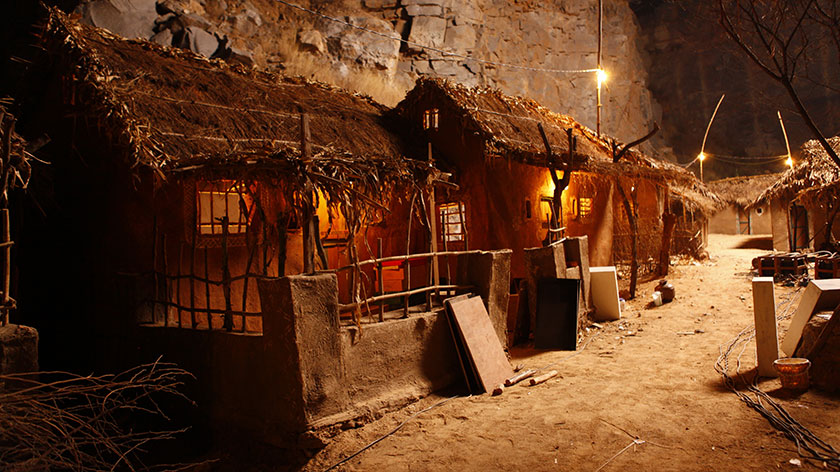
Globally, nearly 3 billion people forced to cook with wood, other fuels that produce smoke, resulting in 2.8 million premature deaths
Bruce Murphy, IEA India Programme Manager, and Hannah Daly, WEO analyst
On 28 April 2018 Indian Prime Minister Narendra Modi announced that India had achieved its goal, ahead of schedule, of providing electricity to every village in India, according to the International Energy Agency. This is one of the greatest achievements in the history of energy.
Since 2000 around half a billion people have gained access to electricity in India, with political effort over the last five years significantly accelerating progress.
In addition, the country was already on track to achieving universal household electricity access by the early 2020s, yet Prime Minister Modi has now moved up this target to the end of 2018. This will improve the lives of over 230 million people.
While this next “last mile” challenge will be not be easy to meet, particularly in a country as large and geographically diverse as India, the social and economic benefits are significant.
For a start, electric lighting makes the use of candles, kerosene and other polluting fuels for lighting redundant, not only saving money (and providing more light) but also seriously improving health.
Electricity can increase productive hours in a household leading to positive outcomes on education and economic well being. It can also spur innovation and lead to entrepreneurial micro businesses ventures, and in time lead to greater agricultural yields. Benefits also flow to the likes of schools, banking and medical services.

India is clearly a success story, and was highlighted as a bright spot for energy access in IEA’s Energy Access Outlook 2017. But in other regions of the world, huge challenges remain, with over 670 million people across the world projected to be without electricity access in 2030 on the basis of current progress. 90% of these people are concentrated in sub-Saharan Africa.
How can the lessons learned from India’s electrification story be translated to accelerate progress towards universal access?

There are two key lessons to highlight. First, there is a need for committed political leadership, backed by institutions with the capacity and mandate to deliver electrification.
Universal household electricity access was a central political commitment in India’s 2014 national elections and the government placed a high priority on following through.
This commitment started from the top with Prime Minister Modi but was enthusiastically pursued by former Power Minister, Mr Piyush Goyal, and then current Power Minister Mr RK Singh. The effort ultimately involved the tireless efforts of numerous officials and operators in the Indian bureaucracy.
The Deen Dayal Upadhyaya Gram Jyoti Yojana scheme is a prime example of coordinated government action. This scheme focused on strengthening distribution networks and increasing village and household connections by co-funding network upgrades and extensions.
Over 99% of people who have gained access in India since 2000 have done so as a result of grid extension – the focus of government measures. The government has more recently been targeting mini-grid and stand-alone solar home systems to deliver access to some of the hardest-to-reach homes.
The second lesson is the importance of transparent monitoring and tracking against targets – you can’t manage what you can’t measure.
India has placed a strong emphasis on this principle, including through the creation of an online dashboard where real-time information is made available on the progress of village and household electrification. Data is also broken down to the state level to encourage internal competition across jurisdictions.
India is also taking these lessons on board as it tackles a related problem: access to clean cooking facilities. Globally, nearly three billion people are forced to cook with wood and other fuels that produce smoke, resulting in 2.8 million premature deaths each year. This is more than twice the number of deaths related to malaria and AIDS combined.
Despite these staggering figures, clean cooking rarely features on the agendas of policy-makers, and as a consequence the number of people cooking with unhealthy fuels has not changed since 2000.
While an estimated 780 million people in India rely on biomass for cooking, progress is emerging, as India is one of the few countries in the world targeting this “blind spot” of energy policy.
Almost 36 million LPG connections have been made since Prime Minister Modi and Minister for Petroleum and Natural Gas, Mr Dharmendra Pradhan, launched a scheme in May 2016 to provide free connections to families living below the poverty line.
This will seriously improve many lives, particularly for women and children in rural India who will be able to avoid indoor air pollution and save months of labor each year currently dedicated to collecting biomass.
As India builds upon its success and massive efforts, the IEA is committed to supporting this agenda with comprehensive data, unbiased analysis, and policy support. This will help translate lessons learned between countries and move the world towards delivering the goal of universal electricity and clean cooking access by 2030. These are attainable challenges, and the benefits far outweigh the cost.
With our new Sustainable Development Scenario, the IEA has mapped an integrated path to meeting this major challenge while also mitigating climate change and reducing air pollution, to deliver a cleaner, more sustainable and equitable energy future.
The solutions include greater levels of renewable energy, more electrification, replacing biomass for cooking with more natural gas and LPG, and deploying more energy efficient cars, airplanes and appliances.
Addressing these issues would cost 380 billion a year to 2030, or 0.3% of global GDP, but the benefits would be immeasurable:
– 1.6 million lives would be saved every year by reducing air pollution;
– two months of work would be saved each year per household, mainly by women, by providing access to clean cooking leading to a huge boost in productivity; and we would avoid the worst effects of climate change, a benefit for the entire planet.


Be the first to comment